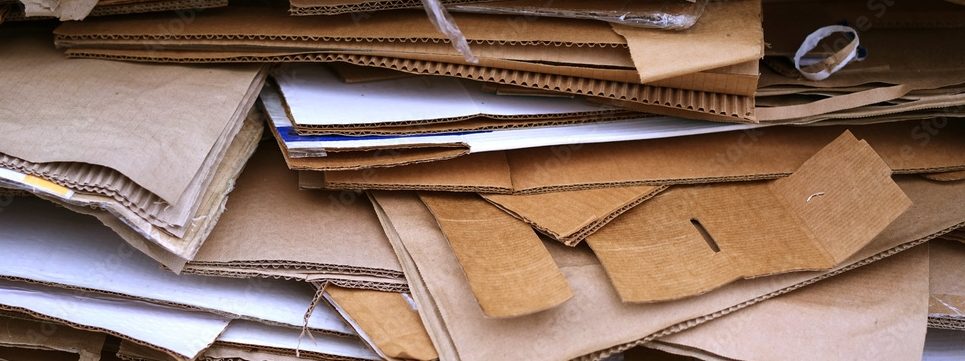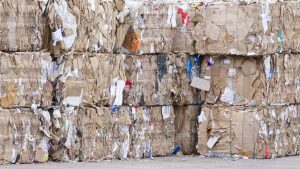During the pandemic, the UK’s top 100 retailers said that, on average, their traffic increased by 52%, which led to an astonishing 135 million cardboard boxes being amassed by UK households. But, with 84% of corrugated Cardboard being recycled in the UK, which equates to roughly 2 million tonnes each year, do we understand the process behind it all? [1]https://www.business-live.co.uk/special-features/online-shopping-surged-during-pandemic-21202301
Where our cardboard is sourced from
At Sigma, we work closely with several local and corporate businesses to ensure that the waste they produce is recycled correctly and have a cost-effective waste management programme suited to their business and its needs. We do also accept cardboard donations directly at our warehouse. However, we only accept non-contaminated cards, so, unfortunately, we can’t take your takeaway boxes from the weekend!
From pulp to paper
As you probably know, Cardboard is manufactured from tree and plant fibres. However, these fibres can vary among tree species. For example, weaker, smoother, and more opaque paper is produced from hardwood trees and is more suitable for printing. Whereas softwood trees, such as pines and firs, have stronger and longer fibres, manufactured can build the strength for corrugated Cardboard.
During the pulping process, the structure of the fibre source is broken down into fibres that are ready to be made into market pulp. To achieve market pulp, there are two processes that the fibres can go through, mechanical pulping or chemical pulping.
The mechanical process involves grinding logs, with the bark removed against revolving grinders to break down the fibres to make pulp. The grinders are sprayed with water to remove the fibres; however, this results in the paper quality being reduced and, therefore, the strength of the fibres being weakened through the process.
The chemical process involves cooking the shavings in a sulphate solution to break down the wood. Then, the fibres are separated from the organic polymers (lignin), a natural glue-like substance that bonds the fibres. This results in a dark brown substance that can be bleached during the procedure and create white craft.
For the pulp to be then made into paper, it’s fed through a Fourdrinier that squeezes the pulp through a mesh belt and drains the excess water. After this, the almost made paper is pressed between wool felt rollers and then passed through steam cylinders to remove any excess water.
Depending on the purpose of the paper, it can either go through a wound wheel that’s intended to turn it into the corrugated card or can go through; coating, winding and smoothing until completed. [2]https://www.gwp.co.uk/guides/how-is-cardboard-made/#:~:text=Cardboard%2C%20as%20you%20are%20likely,leftover%20from%20lumber%20mill%20waste
Pulping, again
The next step for us is to separate the Cardboard and bale it. We then have our Cardboard collected and sent to a mill where it is prepared to be turned into pulp.
This process starts with the Cardboard being shredded using water and various chemicals before going through a pulping machine which will soften and break down the card into fibres. During this, any ink or tape from the Cardboard out of the pulp whilst its fibres bond together. Prior to it being manufactured, once again, the pulp is mixed with water, pressed and then stirred till it’s at the correct consistency.
When the mixing process is finally complete, the fibres are rolled and dried out, resulting in large quantities of brown paper that can be utilized to create all new products.
How does cardboard affect the environment?
Cardboard is one of the materials with the least impact on the environment. Due to its manufacture, CO2 and other oil emissions are reduced by 60% compared to other materials. As well as this, Cardboard is also 100% biodegradable, with corrugated Cardboard completely degrading within a maximum of one year. [3]https://www.gwp.co.uk/guides/how-is-cardboard-made/#:~:text=Cardboard%2C%20as%20you%20are%20likely,leftover%20from%20lumber%20mill%20waste
Even though Cardboard is biodegradable, it produces methane (greenhouse gas) when it breaks down. So, when it isn’t recycled properly, it ends in a landfill and subsequently increases the amount of methane that is being released into the atmosphere.
Recycling cardboard means that we can save energy used to manufacture other resources due to 90% less water and 50% less energy needed to make them. However, when it’s not recycled, natural resources used to produce the materials are put under pressure and can increase raw resource consumption in areas such as oil and energy. [4]https://www.gwp.co.uk/guides/how-is-cardboard-made/#:~:text=Cardboard%2C%20as%20you%20are%20likely,leftover%20from%20lumber%20mill%20waste
The most efficient ways to recycle cardboard
Below are listed some efficient ways of using your old cardboard and how to recycle it to its full potential.
- The first point and possibly one of the most crucial when you’re looking to recycle your cardboard, especially if its in bulk, is to keep it dry! Once cardboard gets wet, it becomes almost impossible to recycle, so keep it as dry as possible prior.
- Along side the first tip, you should also store the cardboard strategically, meaning that any cardboard that contains grease and any other form of contaminants can’t be recycled. So next time you decide to order a takeaway, avoid combining greasy contaminated boxes with dry, non-contaminated boxes.
- Remove any plastic, polystyrene and other contaminates before recycling.
- Make use of a baler. A baler is a cost-effective way to compact large quantities of cardboard and can be more environmentally friendly.
- Carboard can serve in a variety of compost and gardening functions. So, take your carboard outside. [5]https://www.gwp.co.uk/guides/how-is-cardboard-made/#:~:text=Cardboard%2C%20as%20you%20are%20likely,leftover%20from%20lumber%20mill%20waste
To conclude
At Sigma, we aim to help local businesses and those further field to achieve effect waste management to ensure that your cardboard is being recycled effectively. Not only are you creating a positive imagine for you brand and reducing your carbon footprint, but you’re also playing a part in helping to take care of our planet.
If you would like more information or have any questions, feel free to contact a member of our team https://www.sigma18.com/start-saving-today
References


